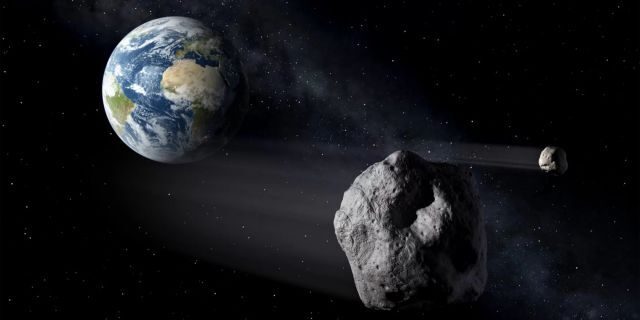Next year, the U.S. space agency plans to spend $150 million on its so-called "planetary defense" programs. Some of the money would be going to develop systems to detect asteroids and comets like the football-field-sized space rock that zipped past the Earth this summer at 55,000 mph. It was only spotted by astronomers 24-hours after it passed by.
This close, passing asteroid was characterized as a "city killer" by Swinburne University astronomy professor Alan Duffy. If it had been on a collision course, it would have crashed into the Earth with more than 30 times the energy of the atomic blast at Hiroshima, the Sydney Morning Herald reported. NASA administrator Jim Bridenstine likened it to the meteor that struck Chelyabinsk, Russia, in 2013.
Even though NASA missed this relatively small asteroid, the agency is "really good at characterizing, cataloging and tracking objects that are one kilometer or larger, which is the type of object that could damage the Earth permanently, Bridenstine said. But NASA is investing in capabilities to discover these smaller objects.
According to NASA's budget estimates, the agency has been steadily increasing its "Planetary Defense" allocations over the past few years. This program received $60 million in funding for fiscal year 2017, $76 million for 2018 and it expects to receive $150 million in 2020. Figures for 2019 were not available because budgets had not been passed, according to NASA's budget report.
The agency's Double Asteroid Redirection Test, or DART, mission, which aims to "change the motion of an asteroid in space," receives the bulk of planetary defense funding. DART functions by crashing into potentially dangerous asteroids at a speed of approximately 6.6 kilometers per second, or 14,764 mph, with the aim of changing the speed of the incoming asteroid.
A DART demonstration will occur in 2021 and will impact an asteroid of comparable size to that which passed the Earth in July — roughly 160 meters across. This is, according to NASA, "more typical of the size of the asteroids that could pose the most likely significant threat to the Earth."
Allaying fears of an astronomical catastrophe such as that suffered by our Jurassic forebears, Bridenstine reminds us that "the difference between us and the dinosaurs is that we have a space program and we are tracking these objects."
Comment: The threat of space rocks bombarding humanity back to the Stone age is very real. And NASA isn't doing a very good job at 'tracking' them. See:
- Astronomers discover asteroid twice the size of Chelyabinsk bolide... a few hours before it narrowly missed Earth
- Asteroid zooms past Earth hours after discovery
- Asteroid 2017 EA flew past Earth at 0.05 LD - 7th, and closest, known NEA to flyby Earth within 1 lunar distance since January 9, 2017
- Unknown Asteroid Buzzed Earth
- NASA turned blind eye to car-sized asteroid that exploded over Caribbean
- Astronomers spotted a car-size asteroid just hours before it exploded over Puerto Rico
Source: Fox Business




Reader Comments
So sorry, babe.
R.C.
Nukes and Star Wars.
saadatrent
[Link]
R.C.